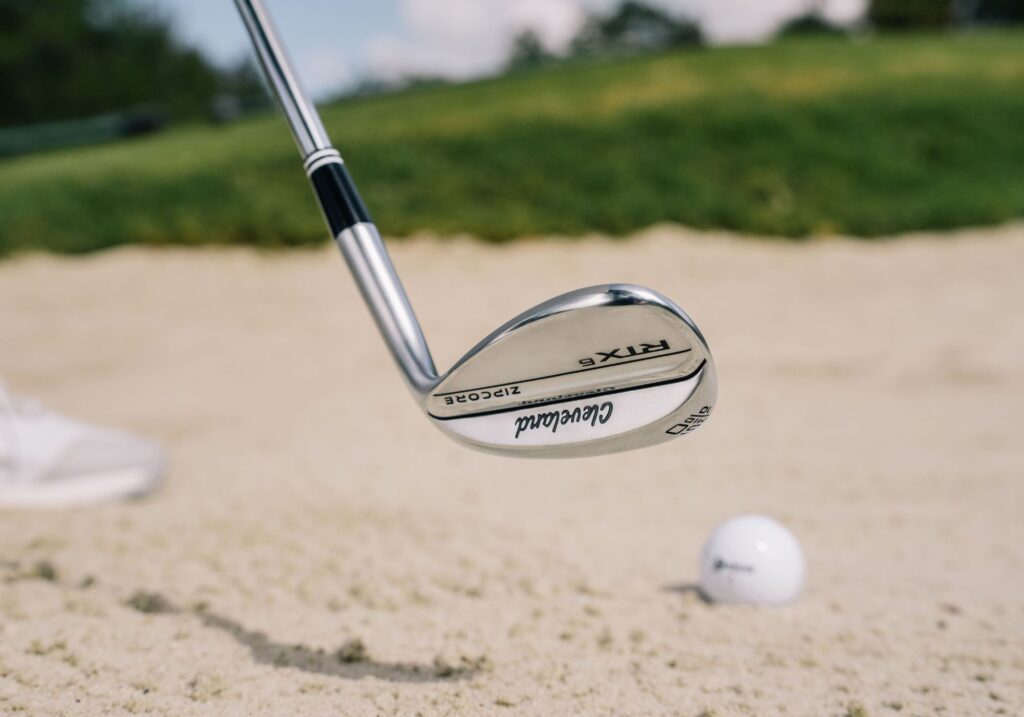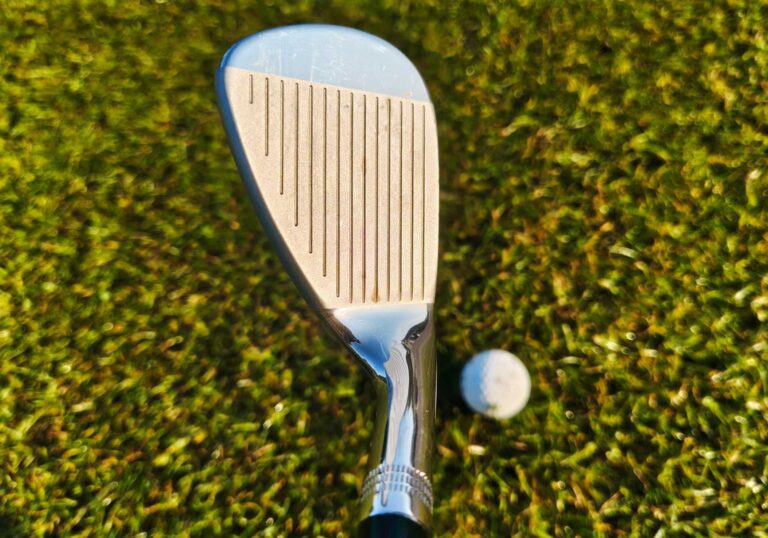Have you ever hit what felt like the perfect wedge shot… only to watch the ball run out instead of checking up? Or maybe your trusty sand wedge just doesn’t bite like it used to. If that sounds familiar, your wedges might be worn out and it could be costing you strokes around the green.
Wedges wear out faster than most clubs, but many golfers don’t realize how much that affects performance.
Here’s how to tell when it’s time to replace them, what to look for and how to make your next set of wedges last longer.
Why worn wedges hurt your game
Your wedges are built for spin and precision. The grooves grab the ball, helping it launch properly, land soft, and stop quickly. But as you use them, especially on full shots, chips, and bunker swings, those grooves get dull and worn. Once that happens, your short game takes a hit whether you notice it or not.
What worn wedges can lead to:
- Lower spin rates
- Higher launch
- Inconsistent distance control
- Shots that run out instead of checking
- Less control out of rough or sand
That bite you count on for one-hop-and-stop wedge shots? It fades fast when the grooves wear down.
How long do wedges last?
It depends how much you play and practice, but here are some general rules:
- Tour pros change wedges every 4 to 6 weeks – NOT necessary for you to do.
- A typical golfer who plays once a week and practices often might get 75 rounds of good groove life
- If you don’t practice much, you might stretch that to 100+ rounds, but spin and control will still slowly decline
The truth is, even if a wedge looks fine, the groove edges may have lost their sharpness long ago.

Signs it’s time for new wedges
Not sure if your wedges are done? Watch for these common signs:
You notice shots rolling out more than usual
If you’re landing wedge shots where you want them, but they keep running past the pin, that’s a red flag. Worn grooves create less friction and spin, so the ball doesn’t stop as quickly.
Your distances become less predictable
Wedge wear leads to “flyers” shots that come out hotter than expected and go long. Or sometimes it’s the opposite, where the ball comes up short for no clear reason. Either way, it messes with your scoring.
Bunker play becomes inconsistent
A sharp sand wedge gives you clean, crisp contact from the sand. If you’re blading shots or having trouble escaping consistently, the issue might be the face, not your swing.
You can see the wear
Take a close look at the clubface. Are the grooves shallow in the middle? Does the finish look smooth or shiny in the high-impact area? That groove wear shows up long before you feel it on every shot.
You play in soft or wet conditions often
Moisture makes groove wear even more noticeable. If your wedges feel unpredictable on damp turf or from the rough, the grooves may not be clearing debris like they should.
Tips to make your wedges last longer
- Rotate your practice wedges. Use an older wedge when chipping or hitting from mats. Save your gamers for the course.
- Clean your grooves regularly. Use a brush or groove cleaner after every round.
- Dry your clubs after every use. Prevent rust and preserve performance, especially if you play in humid or wet climates.
- Store them properly. Avoid leaving them in a hot trunk or a damp garage.
Should you get fit when replacing wedges?
Yes, especially if you’re already investing in new ones. Wedge fitting can help you dial in the right:
- Lofts for proper gapping
- Bounce and grind for your swing and typical turf
- Shaft and feel based on your preferences
Many golf shops and fitters now offer short game fittings. It’s worth the time and usually pretty affordable.
What are your options?
Here are a few top wedge models golfers trust:
- Titleist Vokey SM10 – Multiple grind options and sharp groove performance
- Callaway Opus – High spin and a raw face that improves control
- Cleveland RTZ or ZipCore – Great forgiveness and consistency
- TaylorMade MG4 – Soft feel and great spin from all lies
- PING S159 – Solid turf interaction and dependable performance
- DTC and other smaller or lesser known brands.
You don’t have to buy the latest model either. Previous generations often offer the similar groove tech and feel at a better price, but just make sure you’re not replacing a worn wedge with another worn wedge.
Final thoughts
Your wedges are the most used scoring tools in your bag. If you’re losing control, noticing less spin, or feeling inconsistent around the green, it might be time for an upgrade. New wedges bring back confidence, improve shot-stopping power, and help you save strokes where it matters most.
